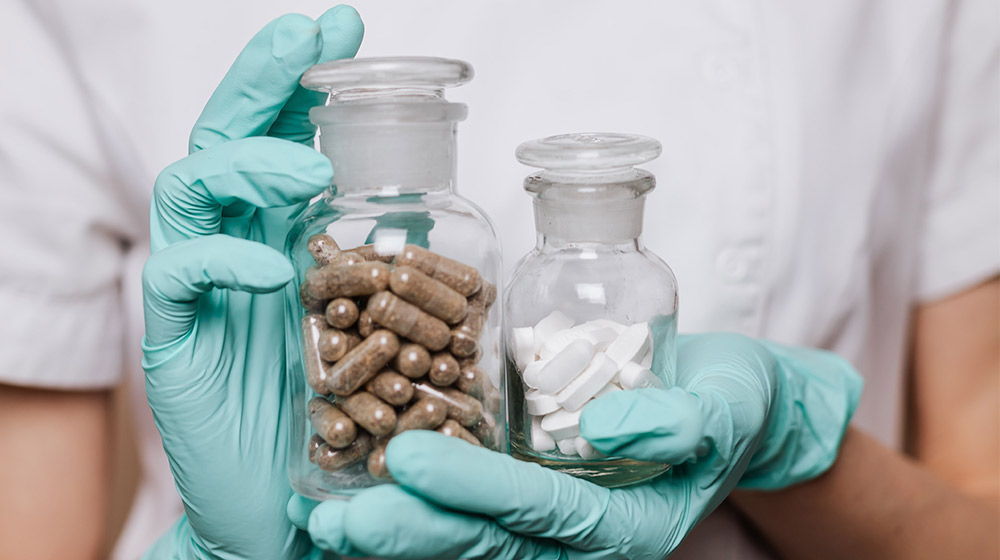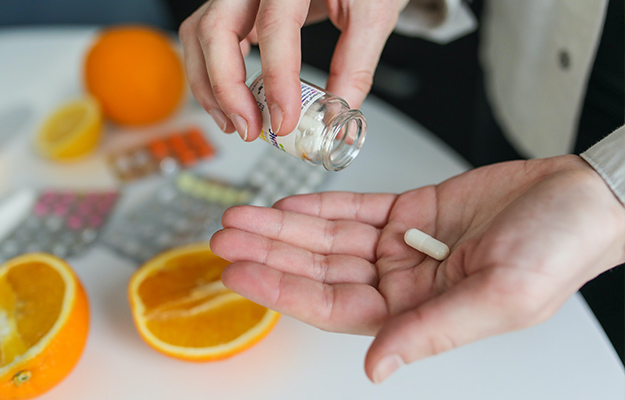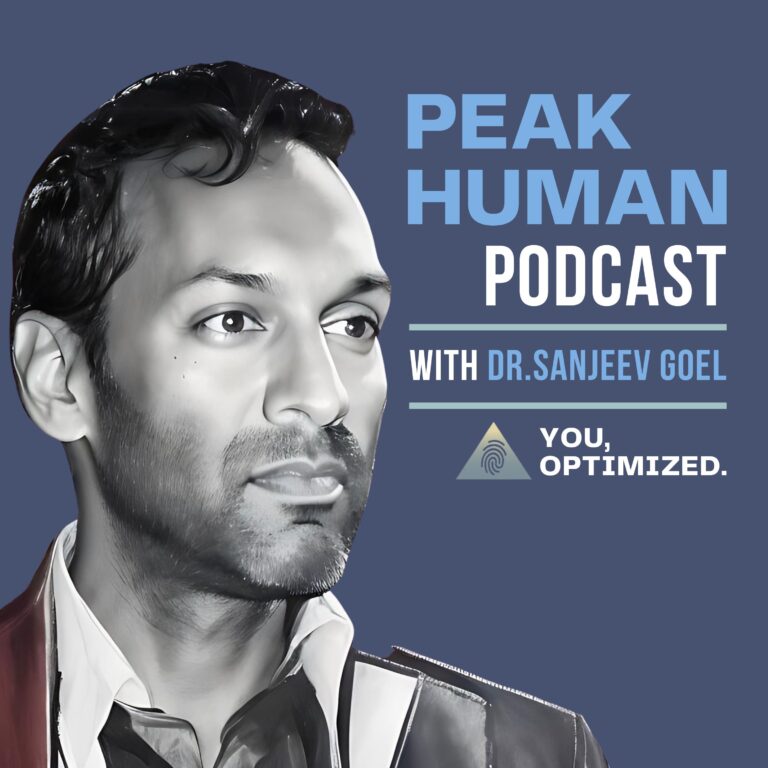Are needles a barrier to your path of recovery?
Explore oral BPC-157 capsules, a convenient and needle-free alternative.
These capsules offer a straightforward way to harness the healing potential of BPC-157, making it easier for anyone to experience its regenerative benefits.
Exploring the Benefits of BPC-157 Oral Vs. Injection for Painless Healing
What is BPC-157?
BPC-157, short for Body Protection Compound 157, is a synthetic gastro peptide composed of 15 amino acids. It is derived from an endogenous gastric protein, BPC, naturally produced in the human digestive tract.
This intriguing peptide is under close review for its various regenerative properties and potential therapeutic benefits.
BPC-157 is synthesized by linking specific amino acids in a sequence (157 refers to the 15 amino acids BPC contains). It is believed to play a vital role in the body’s natural healing processes, making it a fascinating research subject in the medical field.
What Does BPC-157 Do?
The mechanisms of action of BPC-157, when administered in the human body, are multifaceted and contribute to its regenerative benefits.
Some fundamental BPC-157 mechanisms of action include:
- Growth Hormone Synthesis: BPC-157 has been shown to stimulate the synthesis of growth hormone, which can promote tissue repair and regeneration.
- Angiogenesis: BPC-157 stimulates the formation of new blood vessels (angiogenesis), improving blood flow, nutrients, and oxygen to damaged areas.
- Inflammation Inhibition: BPC-157 has anti-inflammatory properties, reducing inflammation at the site of injury or damage.
- Connective Tissue Repair: BPC-157 activates cells involved in connective tissue repair, such as fibroblasts (cells that produce collagen and extracellular matrix), contributing to healing wounds and injuries.
- Nervous System Interaction: BPC-157 interacts with the nervous system through serotonin signaling upregulation, inducing protective effects and potentially influencing mood and behavior.
What is BPC-157 Used for?
![]()
BPC-157’s applications are diverse, and it has shown promise in addressing various health conditions. Some conditions for which BPC-157 is being investigated include:
- Wound Healing: BPC-157 accelerates the healing of cuts, burns, and skin injuries.
- Gastrointestinal Protection: BPC-157 can prevent and treat stomach ulcers, protect against leaky gut syndrome, and alleviate symptoms of irritable bowel syndrome (IBS).
- Muscle and Tendon Injuries: BPC-157 can enhance recovery from muscle and tendon injuries, promoting tissue repair.
- Bone and Joint Healing: BPC-157 may play a role in healing fractures and bone injuries. It may also aid in repairing and maintaining joint tissues, benefiting those with joint-related issues.
- Neurological Disorders: Preliminary studies have investigated BPC-157’s effects on neurological conditions, such as Parkinson’s disease and traumatic brain injury.
Is BPC-157 Safe?
The safety of BPC-157 for clinical use is a topic that requires further investigation, and there needs to be more BPC-157 human trials to conclude.
However, preclinical research has shown a favorable safety profile, even at relatively high doses. This high safety is because BPC-157 is derived from human gastric juices, making it highly stable and generally well-tolerated by most individuals.
Despite the generally positive safety profile, it’s essential to be aware of potential BPC-157 side effects, which can include:
- Injection Site Reactions: In cases where BPC-157 is administered via injection, individuals may experience localized inflammation and pain at the injection site.
- Nausea: In cases where BPC-157 is administered via BPC-157 capsules, users may experience mild nausea as a side effect, although this is not common.
- Dizziness: There have been reports of dizziness after BPC-157 use, particularly at higher doses.
- Blood Pressure Fluctuations: In rare cases, BPC-157 may lead to fluctuations in blood pressure, which could be of concern for those with cardiovascular issues.
- Liver and Kidney Complications: Although rare, there have been reports of liver and kidney complications associated with BPC-157 use. Individuals with preexisting liver or kidney conditions should exercise caution.
Is BPC-157 a Steroid?
No, BPC-157 is not a steroid.
It is essential to distinguish between these two substances. BPC-157 is a synthetic peptide composed of amino acids, while steroids are derived from lipids or fats.
The differences between peptides and steroids are substantial:
- Peptides like BPC-157 have a shorter lifespan in the body and often have more targeted effects, as they primarily work at the cellular level.
- Steroid hormones, such as testosterone and cortisol, have a longer lifespan as they circulate through the bloodstream, affecting various systems in the body.
Moreover, the mode of action, regulatory status, and potential side effects of peptides and steroids differ significantly. BPC-157’s regenerative and protective properties result from its unique mechanisms of action, distinct from those of steroids.
How Long Does BPC-157 Stay in Your System?
The reported half-life of BPC-157 is approximately 4 hours. This short half-life means that the peptide is metabolized and excreted from the body relatively quickly. Consequently, BPC-157 is typically dosed daily to maintain consistent levels in the system.
For those considering a regimen involving BPC-157, it’s essential to know that a typical BPC-157 cycle length lasts 2 to 4 weeks.
A break of at least 2 to 4 weeks is recommended before starting another BPC-157 cycle. This approach prevents desensitization and ensures continued effectiveness.
How to Take BPC-157
BPC-157 is often administered through injections, as this route of administration offers 100% bioavailability. When you inject BPC-157, your body can fully absorb and utilize the peptide, allowing for faster and more efficient benefits.
However, for those who have concerns about needles or prefer an alternative method, BPC-157 capsules are available, providing a different approach to receiving BPC-157.
For those who opt for injections, here’s how to take BPC-157:
- Injection Sites: BPC-157 is typically injected subcutaneously (under the skin) or intramuscularly (into a muscle). Common BPC-157 injection sites include the abdomen, thigh, or buttocks. Rotating between these sites is essential to avoid potential irritation or discomfort at a single injection point.
- Reconstitution: BPC-157 often comes in a powdered form that must be reconstituted with bacteriostatic or sterile water to ensure the solution is contaminant-free. Follow the instructions provided for proper reconstitution.
- Dosage: The dosage of BPC-157 can vary based on your body weight and individual needs. A standard guideline is not to exceed 500 micrograms (0.5 milligrams) daily, typically divided into 2 doses. It’s essential to consult with a healthcare professional to determine the appropriate dosage for your specific situation.
BPC-157 Oral Vs. Injection
To help you decide between oral and injection administration of BPC-157, let’s compare the pros and cons of each route of administration:
| Aspect | Oral | Injection |
| Bioavailability | Lower (~90% bioavailability; peptide may be broken down in the stomach) | High (100% bioavailability) |
| Convenience | Highly convenient | Requires preparation and injection |
| Targeted Effects | Directly benefits the gut | Systemic effects, addressing various issues |
| Onset of Action | Slower onset due to digestion | Faster onset as the peptide is directly absorbed |
| Consistency | May vary based on digestion | Consistent dosing and effects |
| Needles | Needle-free | Involves the use of needles |
Ultimately, the choice between oral and injection administration depends on your specific needs, preferences, and the targeted effects you aim to achieve.
To address gastrointestinal issues, oral BPC-157 capsules may be more suitable. If you’re seeking systemic benefits or have concerns about peptide breakdown in the digestive system, BPC-157 injections may be the preferred method.
BPC-157 Oral Dosage
When taking BPC-157 orally, it’s crucial to determine the appropriate dosage based on your body weight and individual requirements.
Here’s a general guideline for oral BPC-157 dosing:
- The maximum recommended daily dosage is 500 micrograms.
- This daily dose is typically divided into two equal administrations.
However, remember that individual needs and responses may vary.
For a more accurate BPC-157 oral dosage, consult a healthcare professional familiar with peptide therapy. A healthcare professional can consider your health conditions and goals to provide the most suitable dosage guidance.
Where to Buy BPC-157 Capsules
If you’re considering using BPC-157 capsules, sourcing them from a reputable and trustworthy supplier is essential.
One well-regarded source for BPC-157 capsules is Peak Human. Here’s why Peak Human’s BPC-157 capsules are recommended as a reliable option:
- Dosage: Peak Human offers BPC-157 capsules with a standardized 250 micrograms (mcg) dosage. This consistent dosing simplifies the process of determining the appropriate daily intake.
- User Reviews: Positive user reviews and feedback can indicate a reliable product. Peak Human’s BPC-157 capsules have garnered favorable customer reviews, highlighting their effectiveness and quality.
- Certificate of Analysis: Reputable suppliers like Peak Human provide a certificate of analysis (CoA) for their products. This document ensures that the product has been tested and meets safety and quality standards.
When purchasing BPC-157 capsules or any other peptide product, it’s essential to prioritize quality and safety. Only buy from trusted sources, such as Peak Human, that provide transparency and assurance regarding the product’s purity and authenticity.
[Buy Peak Human’s BPC-157 Capsules Here]
Can You Get BPC-157 Capsules Prescribed?
BPC-157 is considered legal for use in the United States, Canada, and the United Kingdom, but it may also depend on your location’s specific rules and regulations.
Please consult Peak Human if you want to use BPC-157 capsules for your health concerns. Not only are we able to prescribe BPC-157, but we can also provide guidance, monitor your progress, and ensure that it aligns with your healthcare plan.
Peak Human can also help you determine your qualifications for BPC-157 use based on your specific health needs and circumstances.
References
Chang C. et al. (2014). Pentadecapeptide BPC-157 Enhances the Growth Hormone Receptor Expression in Tendon Fibroblasts. Molecules.
Hsieh M. et al. (2016). Therapeutic Potential of Pro-angiogenic BPC-157 is Associated With VEGFR2 Activation and Up-regulation—Journal of Molecular Medicine.
Xu C. et al. (2020). Preclinical Safety Evaluation of Body Protective Compound-157, a Potential Drug for Treating Various Wounds. Regulatory Toxicology and Pharmacology.
Jung Y. et al. (2022). The Anti-nociceptive Effect of BPC-157 on the Incisional Pain Model in Rats. Journal of Dental Anesthesia and Pain Medicine.
Vukojevic J. et al. (2022). Pentadecapeptide BPC-157 and the Central Nervous System. Neural Regeneration Research.
If you have questions about BPC-157 capsules or any health problems discussed here, contact us and learn more.
At Peak Human, our team of healthcare professionals helps you reach your ’peak’ health with a custom whole-person approach. Using the most cutting-edge, science-backed biohacking and aesthetic tools available today, we help you achieve the highest physical/cognitive performance state, improving your overall quality of life.
Don’t hesitate to contact us for questions or to book an appointment. Get personalized support and insight from expert physicians.
UP NEXT:
- Plasmapheresis: How This Life-saving Procedure Helps With Severe Viral Infections
- What is Chelation Therapy? Important Risk Factors You Need to Know
- Metabolic Benefits of Exercise: How Building Muscle Can Help You Burn More Calories







